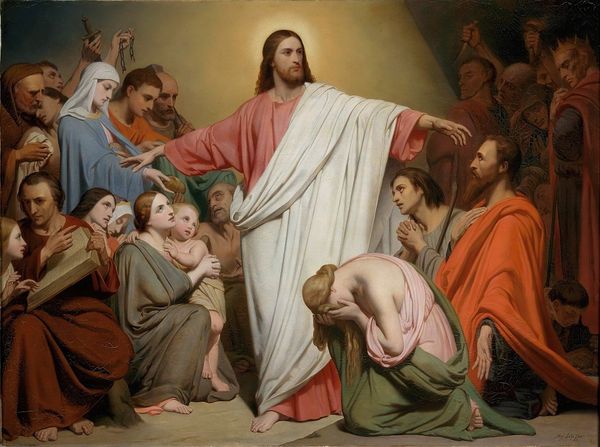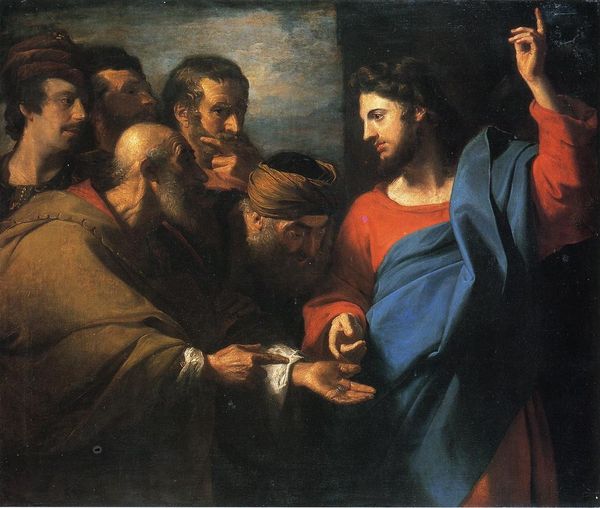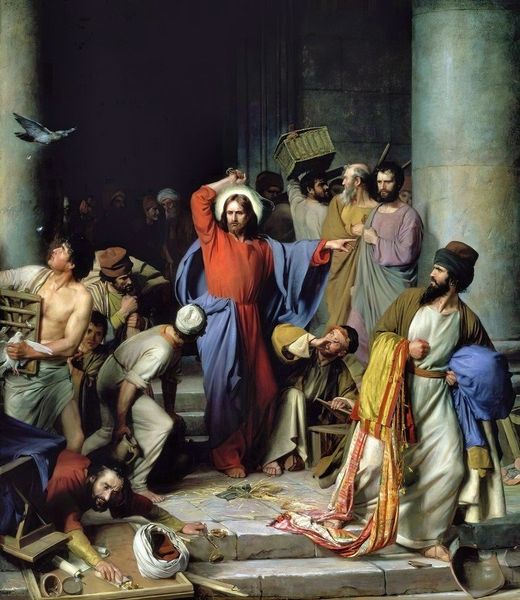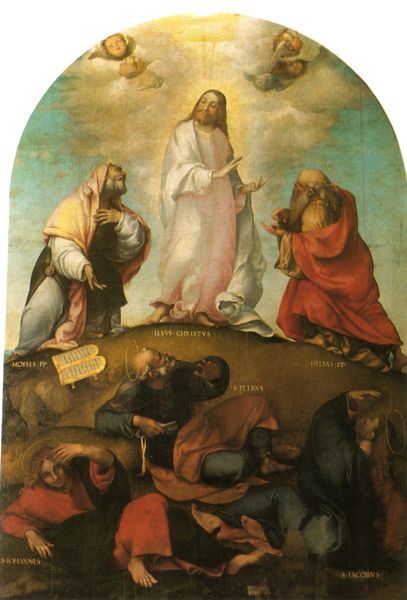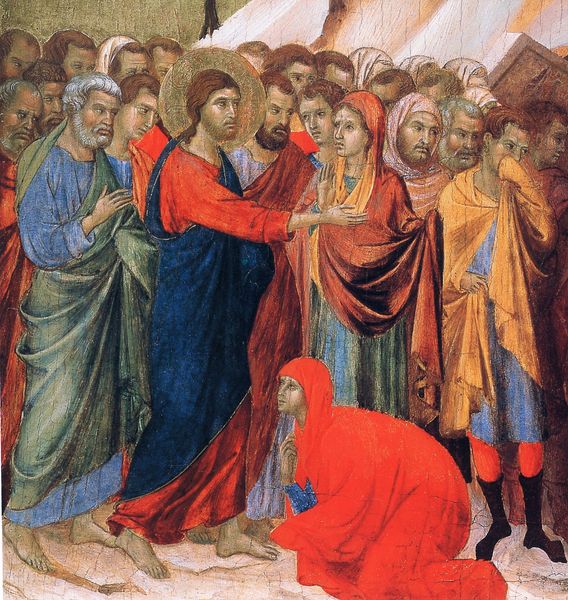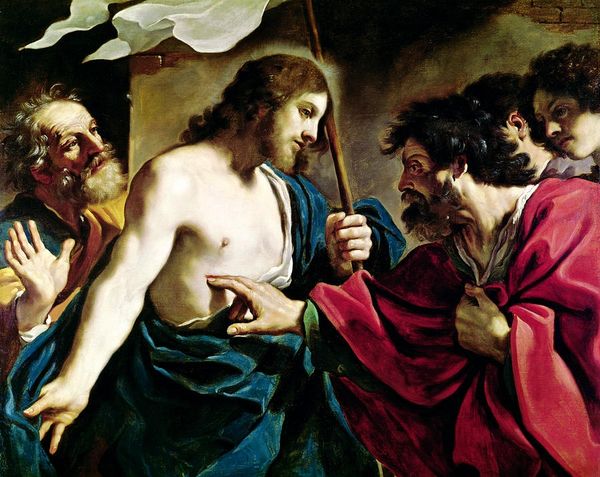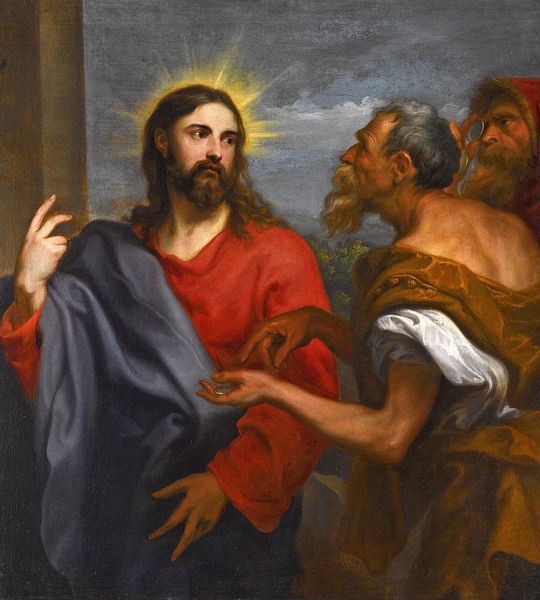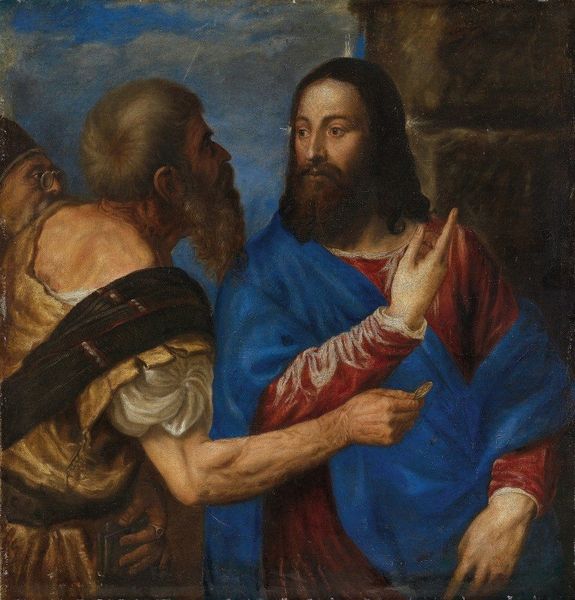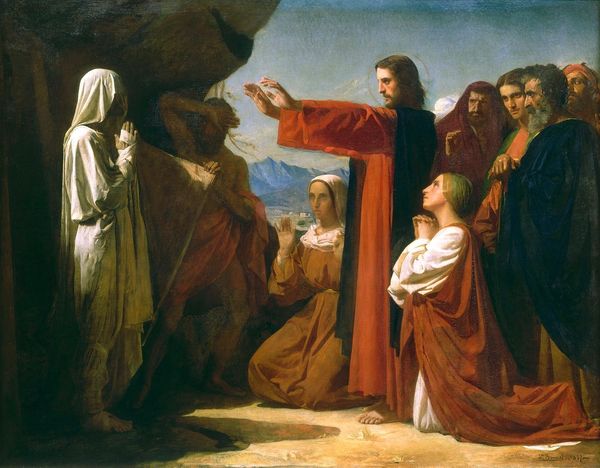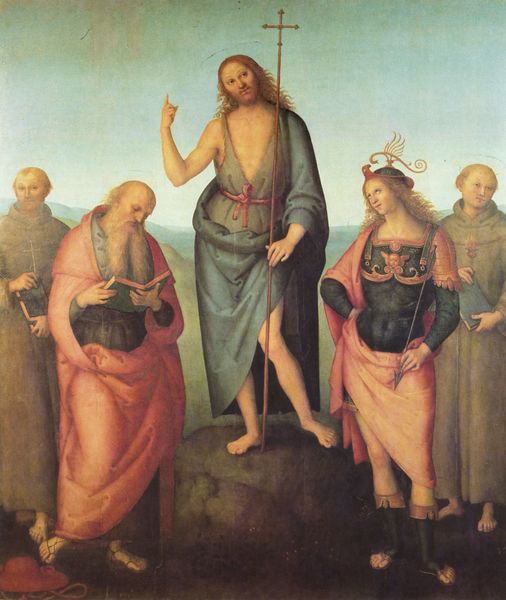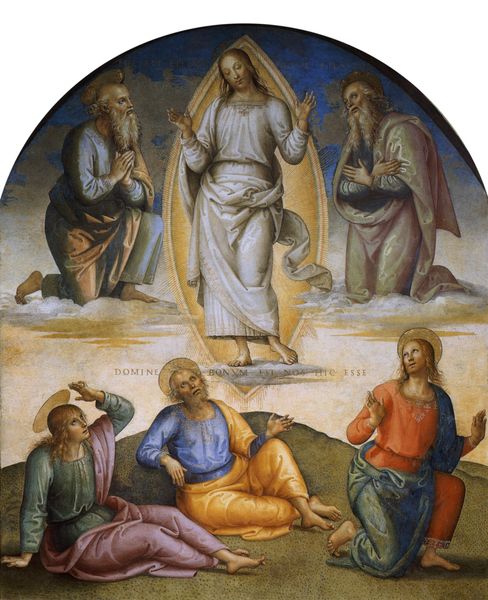
Jesus Returning the Keys to St. Peter 1820
0:00
0:00
jeanaugustedominiqueingres
Musée Ingres, Montauban, France
painting, oil-paint
#
portrait
#
neoclacissism
#
painting
#
oil-paint
#
oil painting
#
jesus-christ
#
christianity
#
history-painting
#
academic-art
#
christ
Copyright: Public domain
Curator: There’s an undeniable formality about this oil on canvas. At first glance, its monumental stillness evokes theatrical grandeur. Editor: Indeed. What we’re seeing is "Jesus Returning the Keys to St. Peter," a history painting created around 1820 by Jean Auguste Dominique Ingres, now residing at the Musée Ingres in Montauban, France. It depicts a key moment laden with meaning for the Catholic Church. Curator: And such emphasis! The figures, though idealized, are carefully positioned. The passing of keys symbolizes the transference of spiritual authority – Christ’s power vested in St. Peter. It suggests unbroken continuity, and the architecture even feels reminiscent of classical settings and proportion, further underscoring lasting and eternal authority. Editor: Exactly. Ingres worked during a period where neoclassicism heavily influenced artistic output. The church sought imagery reinforcing its power post-French Revolution and the Napoleonic era. A painting like this, commissioned at the time, aimed to visually re-establish divine legitimacy amid sociopolitical turmoil. Curator: And the symbolic vocabulary speaks volumes. Note Christ’s gesture, commanding, almost a proclamation. Consider the positioning of the other apostles – a support system both witnessing and accepting Peter’s new role. Even their collective facial expressions lend emotional weight. Ingres utilizes color purposefully; the ochre hues draped across St. Peter almost visually anchor him. Editor: Certainly, the academic approach here is fascinating. Everything appears precisely calculated to maximize the church’s desired effect. But I'm also curious – does that precision enhance spiritual depth, or merely promote a particular sociopolitical agenda? The lack of emotional spontaneity, perhaps, limits its impact today? Curator: An astute point. While seemingly timeless in its design, the intent behind its creation also connects this piece to a particular moment in history. Ultimately, viewers today come with new readings, new contexts, meaning itself becomes transformed and renewed. Editor: Precisely. Perhaps that openness, that fluidity of interpretations, is where the artwork's true power ultimately resides.
Comments
No comments
Be the first to comment and join the conversation on the ultimate creative platform.
